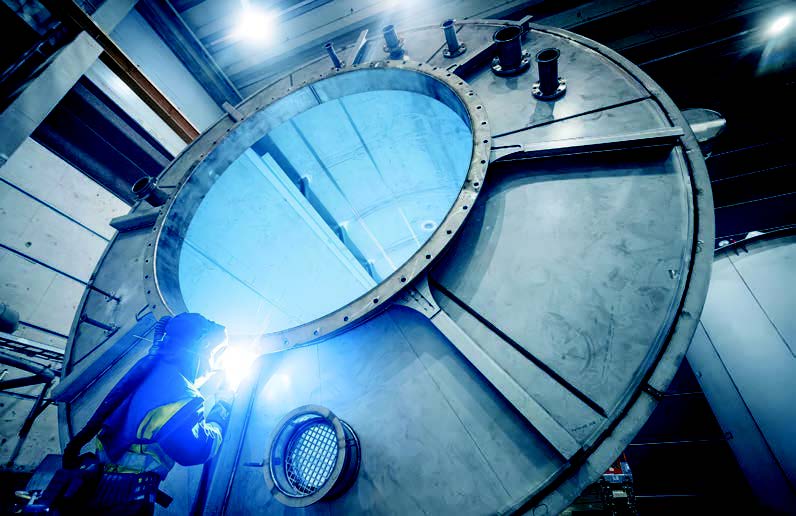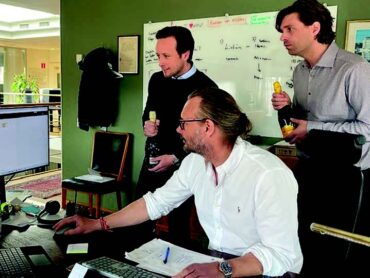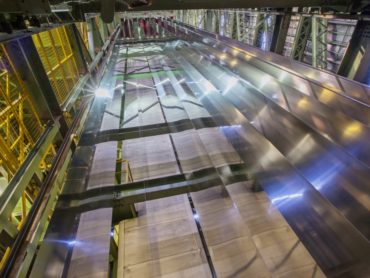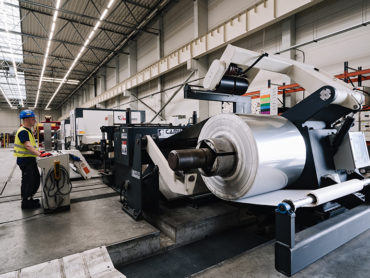Supra 316plus® (EN 1.4420, ASTM UNS S31655) has been developed by Outokumpu as an enhanced version of 316L (EN 1.4404). In addition to being especially cost-effective, it offers improved performance over a wide range of temperatures from cryogenic to elevated temperatures, making it especially suited for LNG applications as well as equipment supporting the fast-growing hydrogen economy. Juha Kärki, Senior Product Manager at Outokumpu outlines the key facts about this innovative stainless steel grade.
Supra 316plus® is particularly cost-effective since it has reduced levels of the relatively expensive alloying elements of molybdenum (Mo) and nickel (Ni) compared with 316L (see Table 1). This reduction in Mo and Ni also offers a further advantage since they are historically volatile in pricing on commodities markets, so Supra 316plus® provides greater price stability. And while this change in composition might be expected to reduce its corrosion resistance, the reverse is true due to the increased chromium and nitrogen content.
C Cr Ni Mo N
Supra 316plus® 0.02 20.3 (above) 8.6 (less than) 0.7 (less than) 0.19 (above)
316L 0.02 16.7 10 2.0 0.05
Table 1: Supra 316plus®has reduced levels of Mo and Ni but increased Cr and N compared with 316L – percentage by weight
Extensive testing has shown that Supra 316plus® offers a considerable improvement over typical austenitic Mo alloyed grades, such as 316L. This is illustrated by two vital measures, PRE (pitting resistance equivalent number) and CPT (critical pitting temperature).
PRE is a predictive measurement of a stainless steel’s resistance to localized pitting corrosion based on its chemical composition: the higher the PRE-value, the better. The PRE for Supra 316plus® is 26, while for 316L it is 24.
The CPT indicates the increased susceptibility of a metal to pitting corrosion with a corresponding increase in temperature. The CPT for Supra 316plus® is 35°C, while for 316L it is 20°C.
The low carbon content (<0.03%) also prevents the precipitation of Cr carbides avoiding intergranular corrosion in welds.
A cost-effective solution with improved performance
As well as offering a cost-effective alternative to 316L, Supra 316plus® is stronger – its yield strength (Rp0.2) is around 100 MPa higher. Supra 316plus® also has excellent fatigue properties, with a fatigue strength of ~390 MPa, while 316L has a fatigue strength of ~310 MPa.
This improvement in mechanical properties makes it possible to use thinner gauges that enable products to be produced with less material – saving on costs. It also saves weight and therefore reduces transportation costs and potentially helps reduce the carbon footprint of finished components.
Performance across a wide temperature range
Supra 316plus® can be applied across the same range of temperatures as 316L, from -196°C to 550°C. However, at high temperatures it offers superior performance. At 550°C, Supra 316plus® has a yield strength (Rp0.2) of 150 MPa compared with 100 MPa for 316L.
For elevated temperature applications, designers tend to specify 316Ti (EN 1.4571), which is a titanium-stabilized alternative to 316L. However, this additional cost may not be necessary, since over the temperature range 20°C to 550°C, Supra 316plus® outperforms 316Ti in terms of yield strength.
Cryogenic capability
When temperatures fall, Supra 316plus® offers important performance benefits over 316L in terms of higher energy absorption, strength and yield strength, while its ductility is only decreased slightly. These properties make Supra 316plus® ideally suited for arctic, liquid natural gas (LNG) and cryogenic applications.
Ready for the hydrogen economy
The cryogenic capability of Supra 316plus® makes it suitable for many storage and transportation applications where hydrogen is liquified. Furthermore, it is ideal when gaseous hydrogen is compressed at high pressures. In some materials, this could result in hydrogen embrittlement, where the diffusion of the gas into the surface eventually leads to cracking. The stable austenitic microstructure of Supra 316plus® reduces this risk.
Forming and welding
Supra 316plus® can be formed in the same way as 316L using all typical forming processes. It also has excellent weldability and is suitable for the full range of conventional welding methods.
A wide range of applications
Juha Kela, Senior Product Manager at Outokumpu, says that Supra 316plus® has been adopted by customers for a wide range of applications including heat exchangers, water treatment, piping, process and storage tanks, and indoor and outdoor architectural installations. Supra 316plus® is effectively a drop-in replacement for 316L.
For further details see: www.outokumpu.com/supra316plus
!function(e,t,n,c,r,a,i){e.Newsletter2GoTrackingObject=r,e[r]=e[r]||function(){(e[r].q=e[r].q||[]).push(arguments)},e[r].l=1*new Date,a=t.createElement(n),i=t.getElementsByTagName(n)[0],a.async=1,a.src=c,i.parentNode.insertBefore(a,i)}(window,document,"script","https://static.newsletter2go.com/utils.js","n2g");var config = {"container": {"type": "div","class": "","style": ""},"row": {"type": "div","class": "","style": "margin-top: 15px;"},"columnLeft": {"type": "div","class": "","style": ""},"columnRight": {"type": "div","class": "","style": ""},"label": {"type": "label","class": "","style": ""}};n2g('create', 't5up6a9j-uwzoraoj-lbg');n2g('subscribe:createForm', config);








